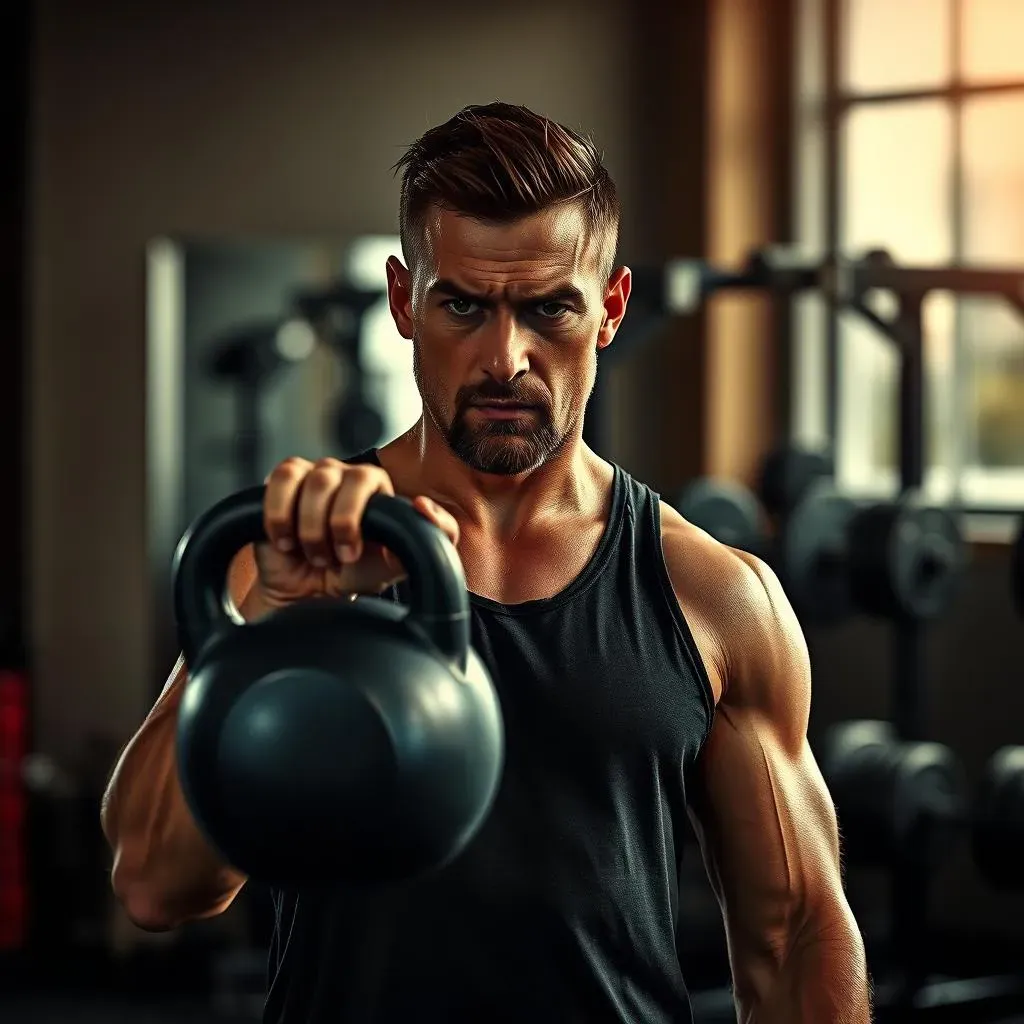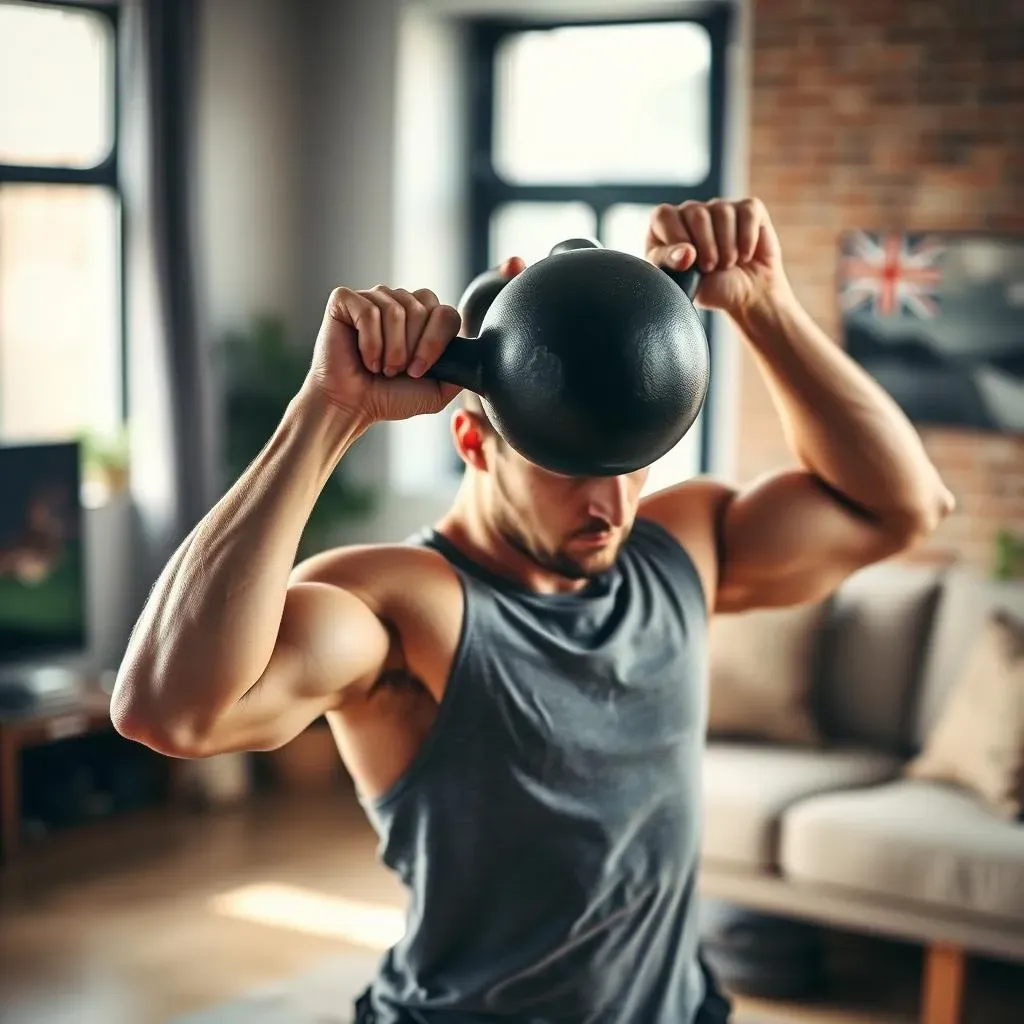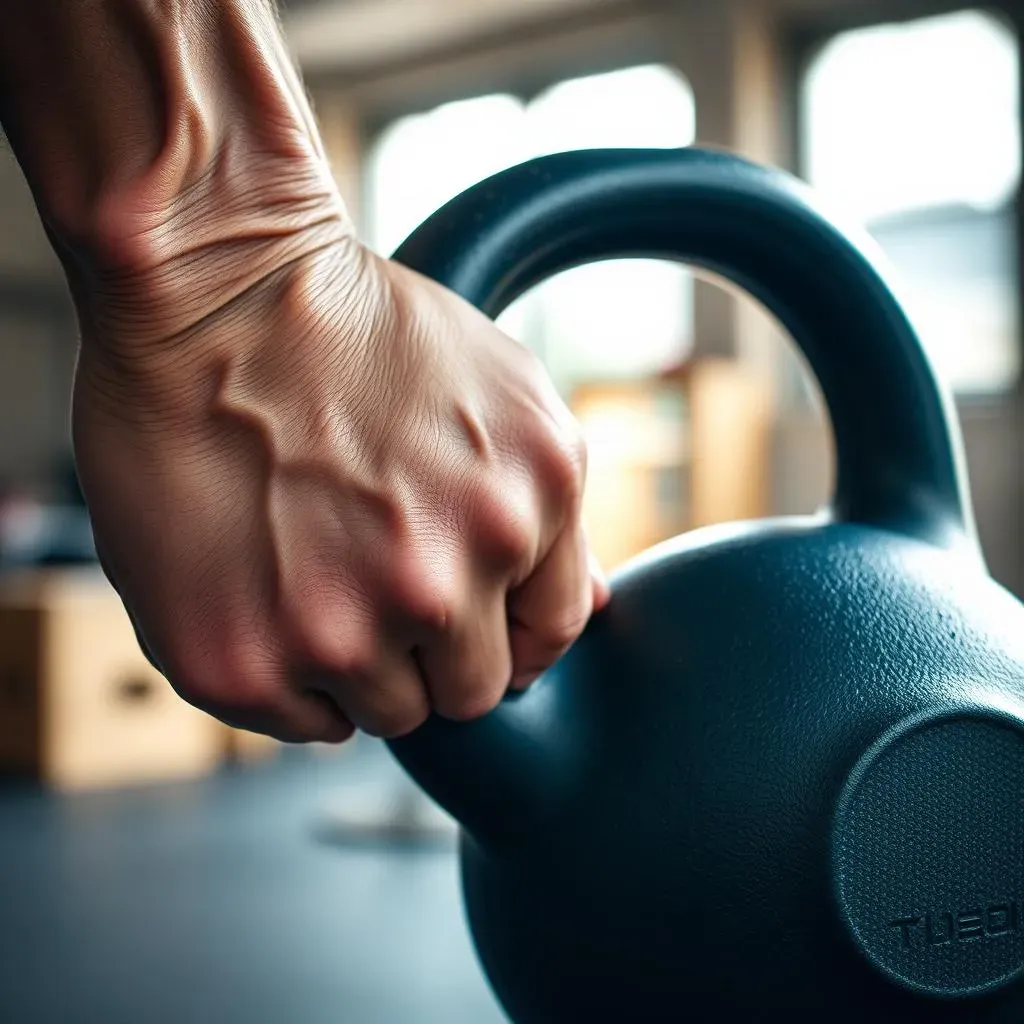Table of Contents
Tired of the same old chest day routine? Are you looking for a way to spice things up and build a strong chest without relying solely on traditional gym equipment? You're in the right place. Forget the crowded bench press; it's time to explore the world of kettlebells. This article will show you exactly how to workout chest with kettlebells, using five of the best exercises designed to challenge and strengthen your pectoral muscles. We'll dive into why kettlebells are awesome for chest training, offering a unique blend of strength, stability, and versatility. I'll also share some crucial tips for getting the most out of your kettlebell workouts, including how to ensure you're using proper form and technique. We will also be covering how to progress your training. So, grab your kettlebells, and let's get ready to build a chest that will make you feel great.
Best Kettlebell Exercises for Chest Workouts

Best Kettlebell Exercises for Chest Workouts
The Kettlebell Floor Press
Let's kick things off with the kettlebell floor press, a fantastic exercise that’s kinder to your shoulders than a traditional bench press. Lie on your back with your knees bent and feet flat on the floor. Hold a kettlebell in one hand, with your elbow bent at about 90 degrees. Now, press the kettlebell straight up towards the ceiling, keeping your wrist straight. Lower it back down slowly and with control. It's a simple movement, but it really engages your chest muscles. Make sure you're not just flopping your arm up and down; think about squeezing your chest at the top of each rep.
A good tip is to focus on keeping your core tight. This will help to stabilize your body and make sure the work is going into your chest, not your lower back. I like to imagine I'm trying to make my chest muscles meet in the middle when I press the weight. You could even try pausing for a second at the top of the movement to really feel the burn.
The Kettlebell Bench Press
Next up, we have the kettlebell bench press, which mimics the classic barbell version but with a twist. If you have a bench, great! If not, you can also do this on the floor. Lie on your back, holding a kettlebell in each hand, with your elbows bent. Press the kettlebells up, again focusing on squeezing those chest muscles at the top. You will notice, controlling the kettlebells is a bit different from a barbell; it requires more stability. This is a good thing because it engages more of your stabilizer muscles. Just be careful you dont drop the kettlebells on your face.
I remember when I started using kettlebells for bench press, I was surprised by how much harder it felt. It's not just about the weight; it’s about control and balance. Try starting with a lighter weight than you think you need and focus on your form. Remember, it's not a race; it’s about doing each rep with intention and good form. You'll feel your chest working hard, and that’s the point.
Exercise | Why it's Great | Things to Remember |
|---|---|---|
Kettlebell Floor Press | Shoulder-friendly, great for beginners | Keep core tight, control the movement |
Kettlebell Bench Press | Builds strength, increases stability | Focus on form, start light |
Benefits of Using Kettlebells for Chest Training

Benefits of Using Kettlebells for Chest Training
So, why should you ditch the dumbbells and barbells for kettlebells when it comes to chest workouts? Well, kettlebells are not just some trendy fitness fad; they offer a unique set of advantages. For starters, they're fantastic for building functional strength, meaning you’re not just building muscles for show, but muscles that actually help you in everyday life. The offset weight of a kettlebell forces your body to work harder to stabilize, engaging more muscles than traditional weights. This leads to better overall strength and stability, not just in your chest but throughout your entire body. Plus, let's face it, kettlebells are just plain fun to use. It is like a cannonball with a handle, what is not to love?
Another significant benefit is the improved grip strength you'll develop. Holding a kettlebell, especially during movements like presses, really works your hands and forearms. This translates to better performance in other activities, whether you're carrying groceries or trying to open a stubborn jar. The nature of kettlebell exercises often involves more natural, flowing movements, which can reduce the risk of injury and improve your range of motion. And here is a bonus, you don’t need a lot of space to work out with kettlebells. They're perfect for home workouts, which is a big win if you don't feel like going to the gym. I've had days where my workout was just me and my kettlebell in my living room, and trust me, it's still a killer workout.
Benefit | Why It Matters |
|---|---|
Functional Strength | Strength that translates to everyday activities. |
Improved Stability | Engages more muscles for better overall balance. |
Enhanced Grip Strength | Stronger hands and forearms for daily tasks. |
Versatility | Great for home workouts and limited space. |
Tips for Effective Kettlebell Chest Workouts

Tips for Effective Kettlebell Chest Workouts
Master the Grip
so you've got your kettlebell, but how are you holding it? It's not as simple as just grabbing it and going. The way you grip the kettlebell can make or break your workout. For most chest exercises, you want a firm but relaxed grip. Don't death-grip the handle, that'll just tire out your forearms. Instead, imagine you're holding a bird; you want it secure but not crushed. A good grip will allow you to control the kettlebell and engage your chest muscles more effectively. I like to focus on the handle sitting comfortably in the palm of my hand, not up in my fingers.
Another thing to watch out for is how the kettlebell sits on your wrist. You don’t want the weight pulling on your wrist in a way that feels uncomfortable or unstable. Adjust your hand placement until it feels secure and balanced. Experiment a little bit to find what feels right for you. Everyone is different. If you're not sure, it's always a good idea to watch some videos or ask a trainer. Trust me, getting the grip right is a game changer.
Progressive Loading
Now, let's talk about making progress. You can't just keep using the same weight forever and expect to see results. That's where progressive loading comes in. It's basically the idea that you need to gradually increase the stress on your muscles to get stronger. This can be done in a few ways. You can increase the weight of the kettlebell you're using, add more reps, or increase the number of sets. I like to start by adding a couple of extra reps or sets each week until it feels easier, then I bump up the weight a little. It's a slow and steady process, but it's the most effective way to build strength over time.
Don't get caught in the trap of thinking that more is always better. It's better to increase weight or reps slowly and maintain good form than to jump too far ahead and risk injury. Listen to your body. If you're feeling pain, not just muscle soreness, then it’s time to back off. I once tried to increase my weight too quickly and ended up with a strained shoulder. It was not fun. Consistency and patience are key, and that's something you should embrace when trying to get stronger.
Tip | Why it's important |
|---|---|
Master the Grip | Ensures control, engages the right muscles. |
Progressive Loading | Gradually increases strength, prevents plateaus. |
Double Progression
let's get a little bit more advanced. When you are trying to get stronger, simply adding more weight isn't always the best strategy. Sometimes you need to think about how you are progressing in other ways. This is where the idea of double progression comes in. Double progression is a method of gradually increasing the demand on your muscles by increasing the reps and sets, and then increasing the weight. So you are not only increasing the weight, but also the volume. It works by focusing on increasing your reps and sets within a given weight range, and when you can comfortably do the top end of that range, then you increase the weight.
For example, if you are doing the kettlebell floor press, and your target is 3 sets of 8-12 reps. You might start with 3 sets of 8. Then the next workout you might do 3 sets of 9, and then 3 sets of 10, and so on. Until you are able to do 3 sets of 12 reps. Then you increase the weight, and start from 3 sets of 8 again. This means that you are always working to improve the volume of work you can do, as well as the weight you can lift. This is a more sustainable method of progressing and it also allows your body to adapt and get stronger in a way that is less prone to injury. This is something that I wish I had understood when I started my fitness journey.
How to Progress Your Kettlebell Chest Workout

How to Progress Your Kettlebell Chest Workout
The Importance of Consistent Training
so you've got the basics down, you know how to grip the kettlebell, and you're starting to feel the burn. But how do you actually keep making progress and avoid hitting a plateau? Well, the first key is consistency. It's not about going all-out one day and then not touching a kettlebell for the next week. It's about showing up regularly, even when you don't feel like it. Think of it like building a house, you can't just throw up some walls and hope it stays standing. You need to lay a solid foundation, brick by brick, with consistent effort over time. I aim for at least three consistent workouts a week, and over time you will see a lot of positive changes. It is not about how hard you push, but how consistent you are.
Consistent training is where the magic happens. It's when your body starts to adapt to the stress you're putting on it. This doesn't mean you need to be in the gym for hours every day, but it does mean you need to make your workouts a regular part of your routine. I like to schedule my workouts like appointments, that way I'm less likely to skip them. It's also important to listen to your body, if you feel like you need a rest day, then take it. Rest is just as important as training when you are trying to get stronger, and it is crucial for muscle growth. Remember, it's a marathon, not a sprint.
Vary Your Exercises
Another important thing to consider when trying to improve your kettlebell chest workout is exercise variation. You do not want to just do the same thing over and over again, not only will you get bored, but your body will get used to it. Doing the same exercises repeatedly will lead to a plateau, where you stop seeing gains. Instead, you should be switching up your exercises every few weeks. There are a lot of different ways to work your chest with kettlebells. For example, you can add incline presses, or deficit pushups with kettlebells. When you vary the exercises, you challenge your muscles in new ways, leading to more growth and strength. It is like learning a new language, you need to try different words and phrases to expand your vocabulary.
I like to create a list of exercises that I can rotate through. This keeps my workouts fresh and exciting, and it also ensures that I'm working my chest muscles from different angles. It doesn't have to be a huge change, you can just switch the order you do the exercises, or change the number of reps or sets. The important thing is that you are not doing the same thing every time. When you are doing different things, not only will it lead to better results, but it will also make your workouts more fun. And if your workouts are fun, then you are more likely to stick with it.
Strategy | Why it's Important |
|---|---|
Consistent Training | Builds a solid foundation, allows for adaptation. |
Exercise Variation | Prevents plateaus, challenges muscles in new ways. |
Wrapping Up Your Kettlebell Chest Journey
So, there you have it – a solid guide on how to workout chest with kettlebells. We've covered five effective exercises, discussed their benefits, and shared tips to maximize your results. Remember, consistency and proper form are key. Kettlebells aren't just a trendy fitness fad; they're a powerful tool for building strength, endurance, and a well-defined chest. Don't be afraid to experiment, adjust the exercises to your fitness level, and most importantly, listen to your body. Whether you're a seasoned lifter or just starting your fitness journey, kettlebells can be a fantastic addition to your workout routine. Now go lift, and build that chest!